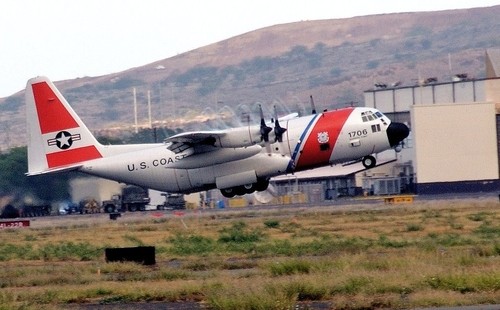The Harsh Reality of US Coast Guard Migrant Policy
by John Konrad (gCaptain) When merchant and cruise ships rescue migrants at sea, they offer more than just a lifeline from the perilous waters; they provide critical sustenance and care....




It was early morning on December 31, 2010 when watchstanders at JRCC Honolulu first received a distress signal from a 406 MHz Emergency Position Indicating Radio Beacon.
There was no way of knowing whom the beacon belonged to or what kind of vessel was in distress because the beacon was not properly registered. Adding to the complexity of the case, the signal was coming in as a “50/50 solution” in which the signal could be coming from one of two locations: Hong Kong or the Marshall Islands.
Chris Kimbrough, the search and rescue coordinator on watch during the rescue, knows all too well the unique challenges that exist with JRCC Honolulu’s vast area of responsibility.
“The research is one of the most difficult parts about being a watchstander here,” said Kimbrough. “You get EPIRB signals, but you may have to do a lot of work to figure out who it belongs to and where it’s coming from.”
It was this detective work and close international partnerships with the Military Liaison Representative of the U.S. Embassy in the Republic of the Marshall Islands that led watchstanders at JRCC to discover that the distress signal was from the motor vessel Jeljelet Ae. Further research identified the vessel departed Majuro, Marshall Islands, the day before and was transporting construction materials to Likiep Atoll, approximately 200 nautical miles north of Majuro.
An HC-130 Hercules aircrew from Air Station Barbers Point, Hawaii, was launched and an Air Marshall Islands aircraft, already in the area, searched for the source of the distress signal. Approximately eight hours after JRCC Honolulu first received the EPIRB signal, the Air Marshall Islands aircraft spotted two life rafts 90 miles northwest of Majuro.
Now that the crew was located, they needed to be rescued. The multinational case continued, including Sea Patrol boat Lomor, coordinated by the Australian technical adviser to the Republic of the Marshall Island’s Sea Patrol, and several other vessels that departed from Majuro to save the 20-person crew.
Amazingly, when the rescue assets arrived on scene, all 20 crewmembers aboard the two life rafts were rescued and taken back safely to Majuro.
“In the 14th District area of responsibility, one of the largest search and rescue AOR’s in the world, we rely on our international neighbors, Department of Defense partners, and other government agencies to successfully prosecute search and rescue cases,” said Lt. Chris Klein, a search and rescue coordinator at JRCC Honolulu.
Despite the fact that Jeljelet Ae had sunk, and her crew was drifting on life rafts miles away from land, the EPIRB, the detective work from JRCC watchstanders and strong international partnerships, led to the successful rescue of all 20 people aboard.
This article was originally posted to CG Compass by: LTJG Stephanie Young
Join the gCaptain Club for curated content, insider opinions, and vibrant community discussions.


Join the 105,923 members that receive our newsletter.
Have a news tip? Let us know.
Access exclusive insights, engage in vibrant discussions, and gain perspectives from our CEO.
Sign Up




Maritime and offshore news trusted by our 105,923 members delivered daily straight to your inbox.



Essential news coupled with the finest maritime content sourced from across the globe.
Sign Up